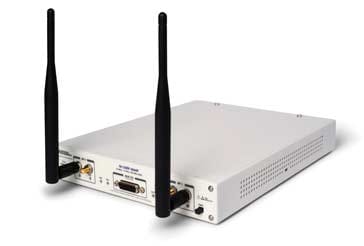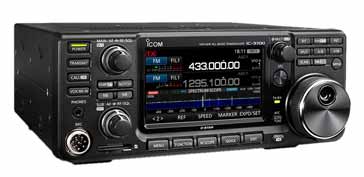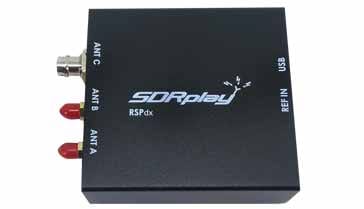Understanding the Software Defined Radio Receiver SDR
The software designed radio receiver, SDR uses software to perform many of the basic functions of the receiver - using software it is easy to reconfigure and use the software on many platforms and for many different functions
Home » Radio & RF technology » this page
Software Defined Radio Includes:
SDR basics
SDR hardware architecture
How to buy the best SDR
Software defined radio technology has advanced significantly in recent years. Advances in hardware mean that costs have fallen and performance has rise.
This means that software defined radios are now seen in everything from high end radio communications equipment, to the simple USB plug in modules available at very low cost.
The software defined radio, SDR, technology is able to provide some significant advantages over traditional hardware based radio designs. Using the power of digital processing, software defined radios are being used in many different applications in many different areas.
Basic SDR concept
The basic concept of the SDR software radio is that the radio can be totally configured or defined by the software.
In an ideal world the incoming signal is immediately converted to a digital format, and the signal is then processed totally digitally.
Conversely for transmit, the signal is generated digitally, and converted to the final analogue signal at the antenna.
This approach has the advantages that the radio can be totally reconfigured for a new application, simply by changing the software. Updates can be made to keep up with new modulation formats, new applications, etc, simply by updating the software.
It also means that a common hardware platform can be used across a variety of different products and applications, thereby reducing costs, whilst maintaining or improving the performance.

How Does SDR Work?
In order to look at how a software defined radio works, it is first necessary to investigate the main blocks in the radio.
An SDR typically comprises two key components, each of which can be broken down further:
RF Front End: This hardware component interfaces with the physical RF signals. It typically consists of a number of elements:
Antenna: Captures electromagnetic waves from the environment.
Low-Noise Amplifier (LNA): Boosts the weak received signals to a suitable level.
Filter: Selects the desired frequency band and attenuates unwanted signals.
Mixer: Shifts the frequency of the incoming signal to a suitable intermediate frequency (IF). That said the analogue to digital conversion is taking palce at ever higher frequencies and therefore a frequency conversion may often not be required.
Analog-to-Digital Converter (ADC): Converts the analog IF signal into digital samples.
Digital Signal Processing (DSP) Software: This software component processes the digitized signal, performing functions such as:
Frequency Conversion: Shifting the signal to different frequency bands.
Filtering: Removing noise and interference.
Modulation/Demodulation: Encoding and decoding information onto and from the carrier wave.
Equalization: Compensating for channel impairments.
Decoding: Extracting the desired information from the received signal.
Software defined radio applications
The SDR software radio concept is applicable to many areas of use:
- Mobile communications: Software defined radios are very useful in areas such as mobile communications. By upgrading the software it is possible to apply changes to any standards and even add new waveforms purely by upgrading the software and without the need for changes to the hardware. This can even be done remotely, thereby providing considerable savings in cost.
- Research & development: The software defined radio, SDR is very useful in many research projects. The radios can be configured to provide the exact receiver and transmitter requirements for any application without the need for a total hardware design from scratch.
- Military: The military have made much use of software defined radio technology enabling them to re-use hardware and update signal waveforms as needed.
- Amateur radio: Radio hams have very successfully employed software defined radio technology, using it to provide improved performance and flexibility.
- Other: There are very many other applications that can make use of SDR technology, enabling the radio to be exactly tailored to the requirements using software adjustments.
There are many opportunities for considering the use of the software defined radio, SDR, concept. As time progresses and the technology moves forward, it will be possible to use the concept in new areas.

Software defined radio definition
Although it may sound a trivial exercise, creating a definition for the software defined radio is not as simple as it seems. It is also necessary to produce a robust definition for many reasons including regulatory applications, standards issues, and for enabling the SDR technology to move forwards more quickly.
Many definitions have appeared that might cover a definition for a software defined radio, SDR. The SDR Forum themselves have defined the two main types of radio containing software in the following fashion:
- Software Controlled Radio: Radio in which some or all of the physical layer functions are Software Controlled. In other words this type of radio only uses software to provide control of the various functions that are fixed within the radio.
- Software Defined Radio: Radio in which some or all of the physical layer functions are Software Defined. In other words, the software is used to determine the specification of the radio and what it does. If the software within the radio is changed, its performance and function may change.
Another definition that seems to encompass the essence of the Software Defined radio, SDR is that it has a generic hardware platform on which software runs to provide functions including modulation and demodulation, filtering (including bandwidth changes), and other functions such as frequency selection and if required frequency hopping. By reconfiguring of changing the software, then the performance of the radio is changed.
To achieve this the software defined radio technology uses software modules that run on a generic hardware platform consisting of digital signal processing (DSP) processors as well as general purpose processors to implement the radio functions to transmit and receive signals.
In an ideal world the signal at the final frequency and at the correct level would emanate, and similarly for reception, the signal from the antenna would be directly converted to digits and all the processing be undertaken under software control. In this way there are no limitations introduced by the hardware. To achieve this, the Digital to Analogue conversion for transmission would need to have a relatively high power, dependent upon the application and it would also need to have very low noise for receive. As a result full software definition is not normally possible.

Advantages and disadvantages of software defined radios
As with any technology thee are advantages and disadvantages to the use of software defined radio technology.
Advantages of SDR technology
- It is possible to achieve very high levels of performance.
- Performance can be changed by updating the software (it will not be possible to update hardware dependent attributes though).
- It is possible to reconfigure radios by updating software
- The same hardware platform can be used for several different radios.
Disadvantages of SDR technology
- For very simple radios the basic platform may be too expensive.
- Development of a software defined radio requires both hardware and software skills.
- Analogue to digital converters limit top frequencies that can be used by the digital section, although this technology has advanced and continues to advance to the point where this is becoming much less of a limiting factor.
Software defined radios are being used increasingly. As processing power becomes cheaper to implement, so SDR based radios are being increasingly used for high end applications and also increasingly they are moving into lower end radios as well.
One of the major advantages of SDR technology is that it can be configured to exactly meet the requirements of the user - small changes to the software can make the radio fit the requirements exactly. Also with open source software like the GNU software, it is becoming increasingly easy to implement.
 Written by Ian Poole .
Written by Ian Poole .
Experienced electronics engineer and author.
More Essential Radio Topics:
Radio Signals
Modulation types & techniques
Amplitude modulation
Frequency modulation
OFDM
RF mixing
Phase locked loops
Frequency synthesizers
Passive intermodulation
RF attenuators
RF filters
RF circulator
Radio receiver types
Superhet radio
Receiver selectivity
Receiver sensitivity
Receiver strong signal handling
Receiver dynamic range
Return to Radio topics menu . . .


